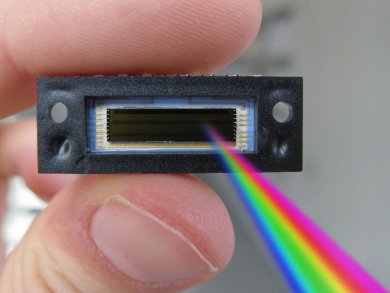Complementary metal–oxide–semiconductor (CMOS) image sensors are common in cell phones and digital cameras. In order to operate under conditions such as high temperature or moisture, CMOS chips are coated in silicon nitride. This coating limits the spectroscopic applications of CMOS chips as it is impermeable to UV and blue light.
Werner Brockherde, Fraunhofer Institute for Microelectronic Circuits and Systems, Germany, and co-workers have developed a new process step that allows production of a protective coating with the same properties but which is permeable to blue and UV light. By increasing the proportion of nitrogen in the coating, the absorption of shortwave light is reduced.
This makes CMOS image sensors suitable for use in wavelength ranges down to 200 nm compared with the current limit of 450 nm. With this process development, CMOS chips could be used in a range of spectroscopic techniques.



